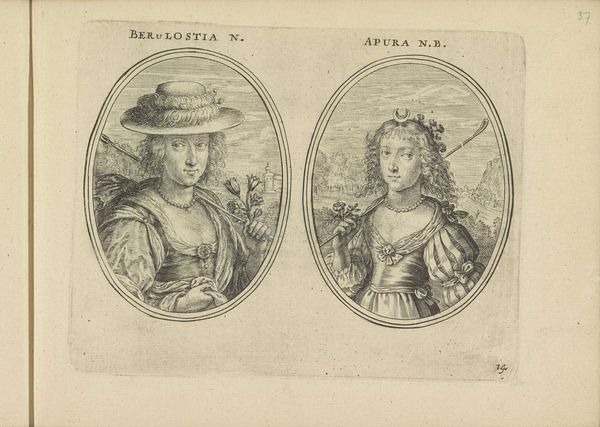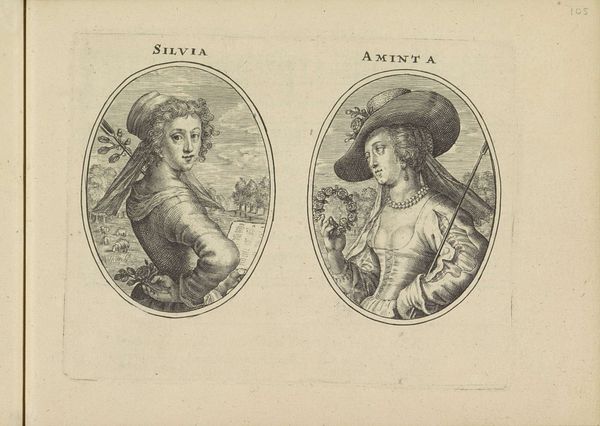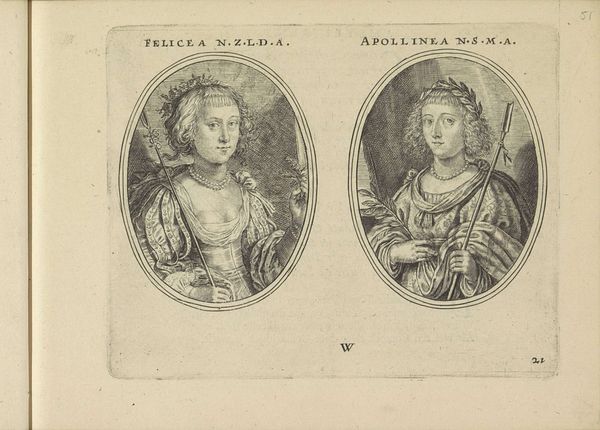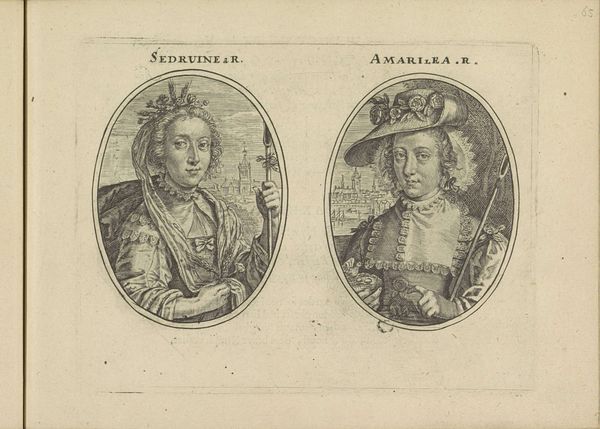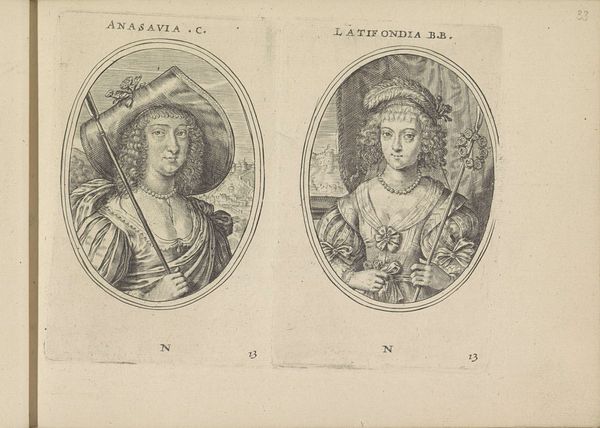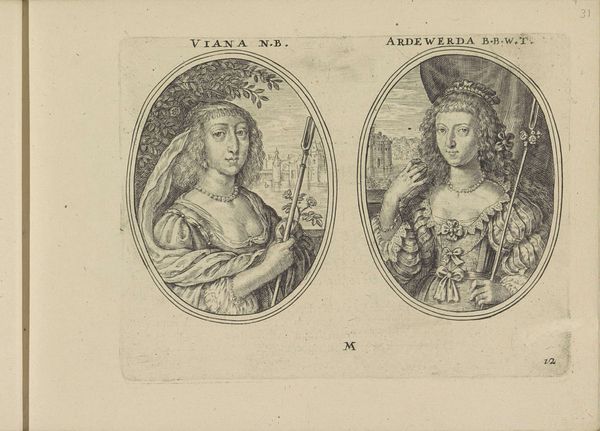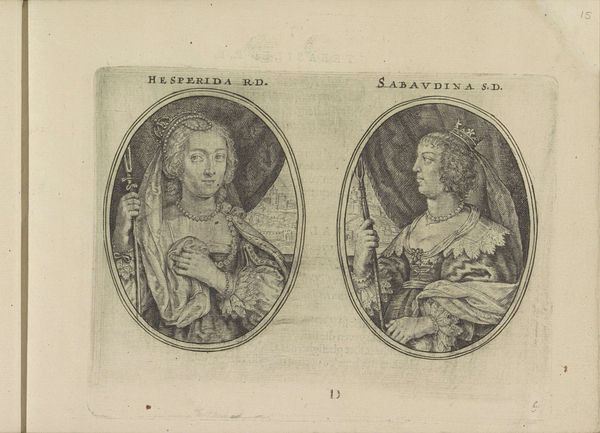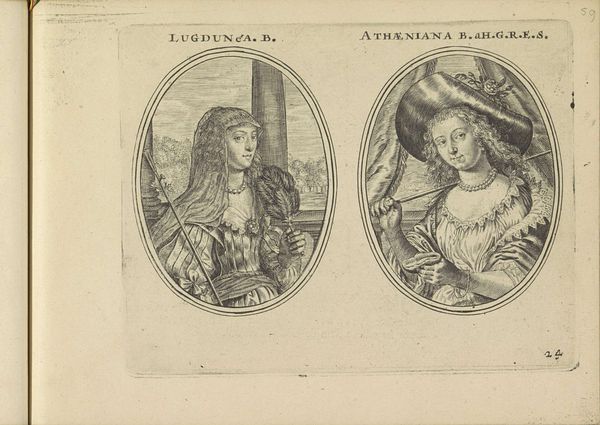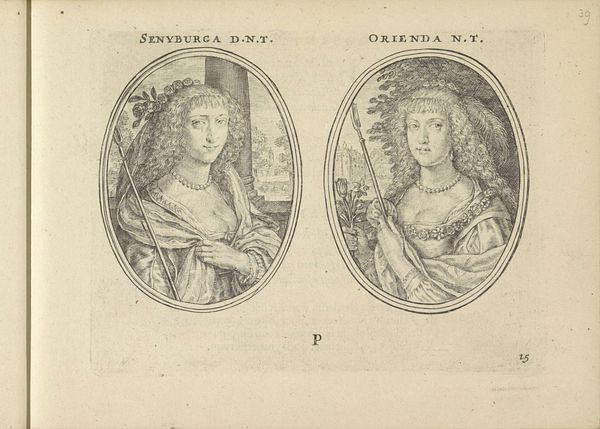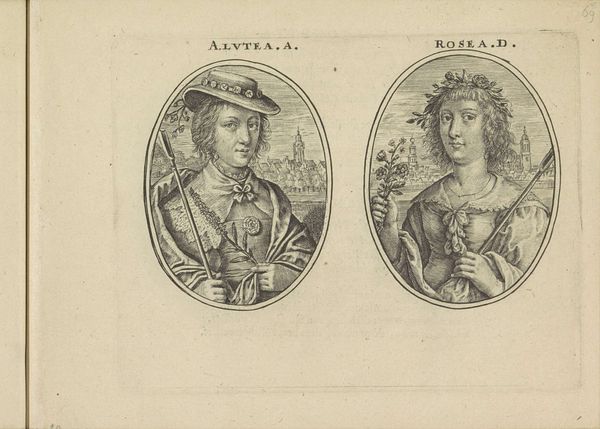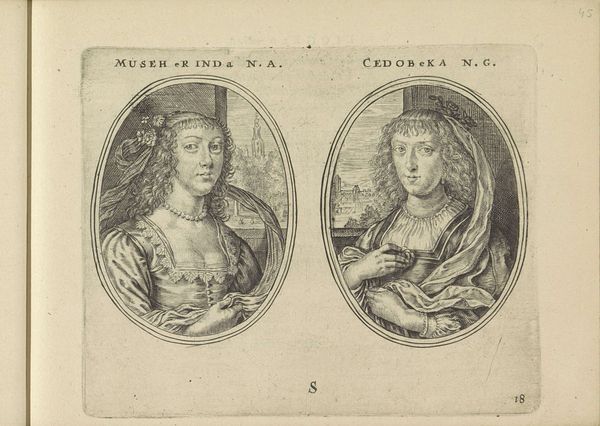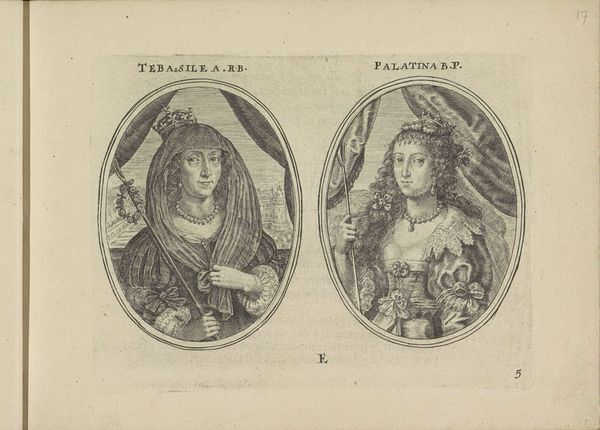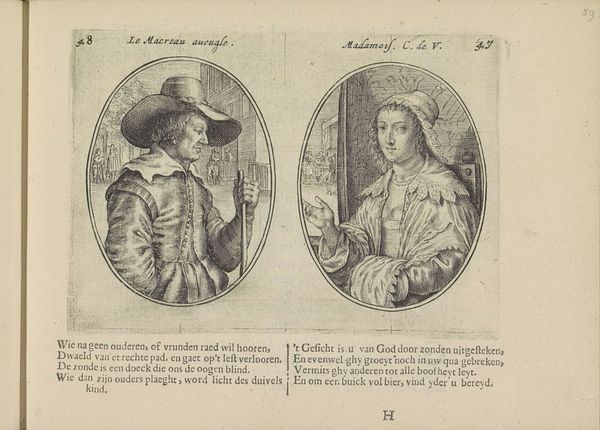
Portretten van Magdalena van de Passe en een onbekende vrouw, beiden als herderin 1640
0:00
0:00
crispijnvandeiipasse
Rijksmuseum
print, engraving
#
portrait
#
baroque
# print
#
figuration
#
genre-painting
#
history-painting
#
engraving
Dimensions: height 112 mm, width 146 mm
Copyright: Rijks Museum: Open Domain
Curator: This engraving from 1640 by Crispijn van de Passe the Younger presents two portraits of Magdalena van de Passe and an unidentified woman, both stylized as shepherdesses. The print is aptly titled "Portretten van Magdalena van de Passe en een onbekende vrouw, beiden als herderin." Editor: "Shepherdesses"—yes, but what elegant, rather overdressed shepherdesses! There's a strange tension there—almost as if Marie Antoinette decided to play at being a milkmaid, rather than, say, getting any actual work done. It makes you wonder what exactly these two women thought of it all. Curator: Indeed, it’s intriguing to consider the role-playing inherent in these representations. The artist employs the conventions of baroque portraiture, but subverts them slightly with the pastoral theme. One observes how the careful engravings produce delicate contrasts within the oval frames—each composition is carefully balanced, adhering to established rules while making subtle commentary on them. Editor: It almost feels ironic, the way they are dressed. You see the meticulous detailing of their lace collars and extravagant hats—it hints at the artifice, that play-acting, in a rather pointed way. Are these really "herderinnen?" They appear as caricatures—as embodiments of courtly indulgence rather than innocence. It makes you wonder who this engraving was aimed at, what conversations it started. It strikes a discordant chord; the baroque perfection veils, rather thinly, a wry, sharp commentary. Curator: An excellent point. The formal aspects cannot be fully divorced from socio-historical context, and your read introduces necessary complexity. One must contemplate the societal undercurrents influencing not only representation, but its reception too. A deeper consideration can explore ways this particular representation engages, even subtly, in social critique. Editor: Absolutely. The best art is, and must always be, subversive in some sense. A good mirror up to society with just the faintest glint of mockery... It’s what keeps us looking, contemplating. After all, haven’t we all played roles to some extent?
Comments
No comments
Be the first to comment and join the conversation on the ultimate creative platform.
